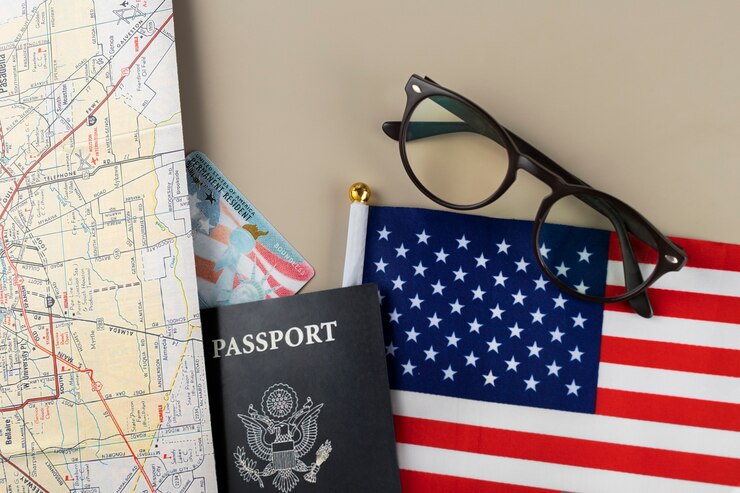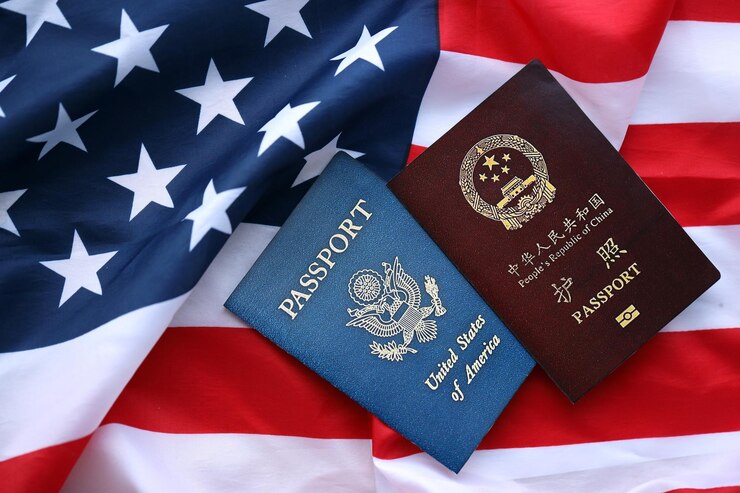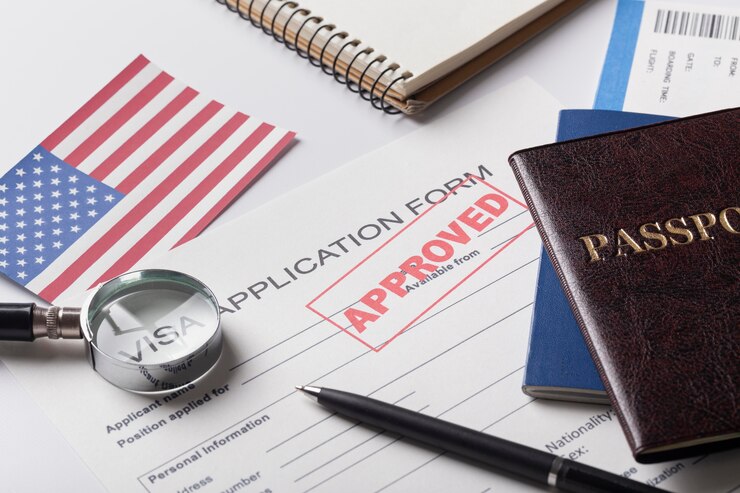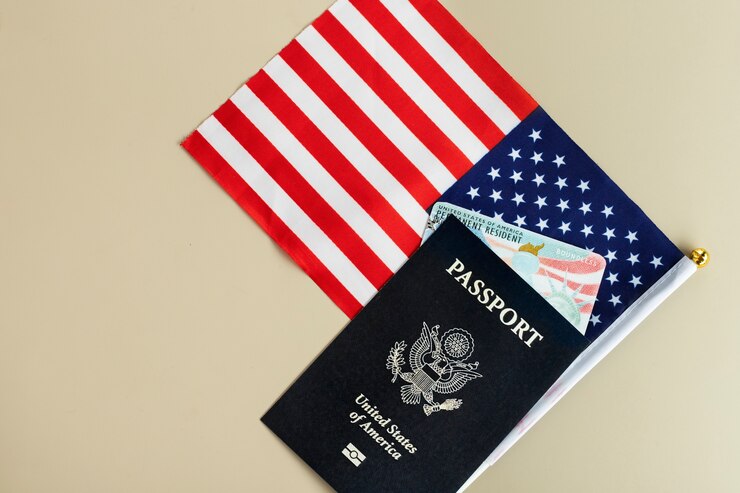For many people, the United States of America is one of the best places to visit. A lot of people in Pakistan want to visit the United States. Because of their interest, Immigration Experts would like to explain how to get a B-1/B-2 Visa to the United States. This is a guide that you can use if you want to go to the USA.

Understanding the US To Get a B1/B2 Visa, Click Here. B1/B2 visas are not for immigration. It lets people from other countries come to the United States for a short time. The visa can be used for either work (B-1) or pleasure (B-2) or for both (B1/B2). People usually get this visa for short trips to the United States. The B visa is usually good for ten years from the date it is given. Travelers can stay in the U.S. for up to 180 days per visit. They can leave and come back to the U.S. again after this time.
B1/B2 USA Visit (B1/B2) Visa Application Process:
Applications for the B1/B2 visa are handled by the U.S. embassy or consulate in your home country. You will need to attend an interview before your visa can be accepted. While you can plan an interview at an embassy or consulate in a different country, expect longer wait times for visa appointments.
Steps to Obtain a B Visa:
Fill out the Online Non-Immigrant Application (Form DS-160). Submit the form online and print the proof page, which you will need for your interview.
Upload Your Digital picture:
Ensure you upload a recent digital picture that meets government requirements.Go to your planned interview at the U.S. embassy or consulate.
Fingerprint Scans:
Digital fingerprint scans are normally taken during the interview.After the interview, the consular officer may ask for additional papers or information to finalize your visa decision.
On interview day:
On the interview, the date gets at least 30 minutes in advance, keep in mind that you will have to take the shuttle so calculate the time accordingly.The interview is mostly straightforward forward largely focusing on your reason to visit and to evaluate whether you will come back to Pakistan or not.
INTERVIEW IS A CRITICAL STEP AND THE DECIDING FACTOR IN GETTING US VISIT VISA. YOU NEED TO PREPARE METICULOUSLY TO INCREASE YOUR CHANCES OF GETTING VISA.
Processing Time Get a USA Visit Visa (B-1/B-2) Visa:
The wait time for a B-1/B-2 visa varies based on where you apply. It may last for seven days or more than two years. The city and nation where you send your application will determine the precise time. You can check the wait time for your specific embassy or port by using the State Department’s online tool under “Appointment Wait Time.” Remember that there may be a longer wait if you apply for an interview outside of your country of residence.
How Long Can You Stay in the USA on a B-1/B-2 Visa?
With a USA visit visa (B-1/B-2), you can stay in the U.S. for up to 6 months per visit. In some cases, extensions may be given if you qualify. When you enter, immigration officers consider how long you will be staying. You are allowed numerous entries into the United States with the B1/B2 visa. There isn’t a set limit on how many times you can visit the U.S. in a year. However, it depends on the judgment of CBP officers who review your situation each time you enter.
It’s important to understand that the B1/B2 visa is designed for short-term visits. This includes work trips, tourism, or medical treatment. It is not intended for long-term living or spending most of your time in the U.S.
Understanding the Difference Between B1 and B2 Visas:
A B1 visa is designed for short business trips. This includes attending conferences, meetings, or contract discussions. However, B1 visa holders cannot work in the U.S. in the usual sense. As of March 2023, B-1/B-2 Visa users can apply for jobs in the U.S. and attend interviews.
B3 Visa:
A B2 visa often called a tourist B-1/B-2 Visa visa, is for travel, vacations, or visiting friends and family. It also covers certain medical treatments and participation in social events or competitions, such as music or sports, without getting pay. A B1/B2 visa is usually given jointly, enabling the holder to travel for both business and pleasure.
How Often Can You Enter the U.S. with a B-1/B-2 Visa?
The quantity of times you can enter the United States with a B-1/B-2 visa changes according to your circumstances. B1/B2 visas are multiple-entry visas, meaning you can enter the U.S. more than once. There’s no set limit on the number of times you can visit the U.S. in a year. However, each entry depends on the discretion of CBP officers who review your case.
It’s important to remember that the B1/B2 visa is made for temporary visits. These visits can be for work, tourism, or medical treatment. The visa is not meant for long-term living in the U.S. or spending most of your time there. Immigration officials might think you’re attempting to reside in the U.S. if you come often or stay for long periods. They could also think you’re misusing your visa if you don’t keep strong connections to your home country. This could lead to denial of entry or problems with future visa applications.
While there’s no official limit on visits, it’s important to respect your visa’s purpose and conditions to avoid any problems. If you need guidance on your case, consulting an immigration expert is advisable.
Fee of B-1/B-2 Visa:
The current government filing fee for a B visa is $185. This fee does not cover the cost of gathering documents, acquiring evidence, or receiving passport photos.

Boundless has helped over 100,000 people with the visa application process. We can help you develop a travel visa plan tailored to your specific needs.
B Visa Requirements:
A B1/B2 visitor visa is used for different trips to the U.S., covering both business and leisure activities. To apply for a B-1/B-2 Visa, you need to show that your visit to the U.S. is temporary.
You must also provide proof that you plan to return to your home country after your stay. Additionally, you should show that you have a residence outside the U.S. where you plan to return. These factors help show that you will comply with the rules of the B1/B2 visa.
Common Reasons for Travel Under a B1 Visa:
Business Consultations: This includes meetings, negotiations, or conversations with business partners in the U.S. Attending Conferences or Seminars: This covers professional, educational, scientific, or business-related meetings.
Settling an Estate:
A B1 visa can be used if you need to handle inherited property or assets in the U.S.If you need to sign or negotiate contracts with U.S. companies, a B1 visa is often suitable.Some professionals must be in the U.S. to take exams or acquire licenses available only there.
Common Reasons for Travel Under a B2 Visa:
This includes sightseeing, viewing landmarks, exploring cities, or enjoying the U.S. culture.A B2 visa is often used to visit loved ones living in the U.S.
Medical Treatment:
If you require medical care or procedures available in the U.S., a B2 visa may be required.Attending concerts, classes, meetings, festivals, or other gatherings can be reasons to use a B2 visa.
involvement in Events or Contests:
A B2 visa can be used for non-professional involvement in amateur tournaments or contests.If the course lasts less than 18 hours per week, it comes under B2 visa rules.
Activities Prohibited Under a B Visa:
- Enrolling in full-time studies
- Engaging in long-term work with a U.S. company
- Performing in paid events or professional shows before a paying crowd
- operating a ship or plane as a member of the crew
- working in paper, radio, film, or other media as a foreign press journalist
- Seeking legal residence in the United States
Can You Change Status from B1/B2?
The B-1/B-2 Visa are temporary and do not provide permanent resident status. However, you can apply to change your status to a different visa type while in the U.S., as long as you meet specific requirements.

This process includes submitting a change of status application to U.S. Citizenship and Immigration Services (USCIS).Important Considerations for Changing Status from B-1/B-2 Visa
When considering a change of status, it’s important to ensure that:
Your reason for staying in the U.S. must fit the new visa type you seek. For example, if you plan to study, you might ask for a student visa (F-1). If you have an employer ready to sponsor you, you could apply for a work visa, such as the H-1B.
Timing:
Apply before your present visa status expires, which is noted on your I-94 Arrival/Departure Record. USCIS suggests submitting your application at least 45 days before your visa status ends.
Eligibility:
Changing your position is not always possible. For instance, if you entered the U.S. under the Visa Waiver Program, you cannot change your status unless it’s due to marriage to a U.S. citizen.
Status Violation:
If you have violated the terms of your B1/B2 visa, such as working without authorization, you generally cannot change your status.
Approval:
Meeting all the standards does not guarantee approval. It is up to USCIS to make the final call.
After tying the knot with a U.S. citizen or permanent resident, you have the choice to ask for a marriage green card. This gives you permission to stay in the U.S. and make a home with your partner. You can put in your request for this green card in two ways: by “adjusting your status” (AOS) while you’re still on U.S. land, or by going through the consulate process from your home country.
Documents Needed for a USA Visit Visa:
Your passport must be good for at least six months beyond your return date.
Provide a recent digital photo that meets government standards.
Travel History Documentation:
Include records of your last five trips to the U.S., if appropriate.Show evidence B-1/B-2 Visa of sufficient funds to cover the full trip, including travel, accommodation, and living expenses.
Evidence of Ties to Home Country:
Provide proof of strong B-1/B-2 Visa connections to your home country, such as work, property, or family.











1 thought on “USA Visit B-1/B-2 Visa”